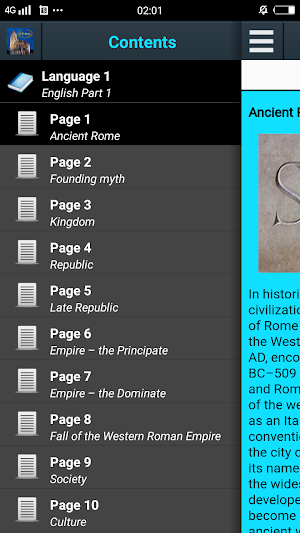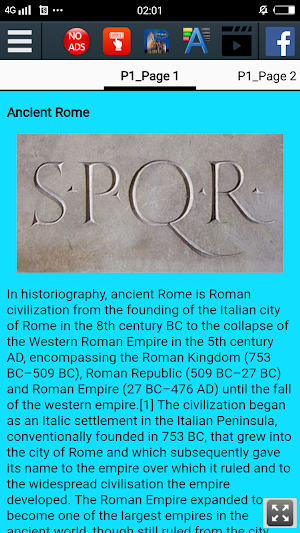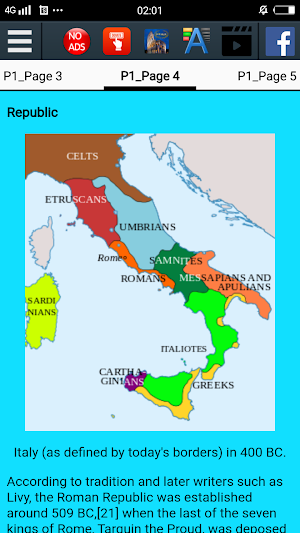







In historiography, ancient Rome is Roman civilization from the founding of the Italian city of Rome in the 8th century BC to the collapse of the Western Roman Empire in the 5th century AD, encompassing the Roman Kingdom (753 BC–509 BC), Roman Republic (509 BC–27 BC) and Roman Empire (27 BC–476 AD) until the fall of the western empire.[1] The civilization began as an Italic settlement in the Italian Peninsula, conventionally founded in 753 BC, that grew into the city of Rome and which subsequently gave its name to the empire over which it ruled and to the widespread civilisation the empire developed. The Roman Empire expanded to become one of the largest empires in the ancient world, though still ruled from the city, with an estimated 50 to 90 million inhabitants (roughly 20% of the world's population at the time)[2]) and covering 5.0 million square kilometres at its height in AD 117.[3]
In its many centuries of existence, the Roman state evolved from a elective monarchy to a democratic classical republic and then to an increasingly autocratic semi-elective military dictatorship of the empire. Through conquest, cultural, and linguistic assimilation, at its height it controlled the North African coast, Egypt, Southern Europe, and most of Western Europe, the Balkans, Crimea and much of the Middle East, including Levant and parts of Mesopotamia and Arabia. It is often grouped into classical antiquity together with ancient Greece, and their similar cultures and societies are known as the Greco-Roman world.
Ancient Roman civilisation has contributed to modern language, religion, society, technology, law, politics, government, warfare, art, literature, architecture and engineering. Rome professionalised and expanded its military and created a system of government called res publica, the inspiration for modern republics[4][5][6] such as the United States and France. It achieved impressive technological and architectural feats, such as the construction of an extensive system of aqueducts and roads, as well as the construction of large monuments, palaces, and public facilities.
The Punic Wars with Carthage were decisive in establishing Rome as a world power. In this series of wars Rome gained control of the strategic islands of Corsica, Sardinia, and Sicily; took Hispania (modern Spain and Portugal); and destroyed the city of Carthage in 146 BC, giving Rome supremacy in the Mediterranean. By the end of the Republic (27 BC), Rome had conquered the lands around the Mediterranean and beyond: its domain extended from the Atlantic to Arabia and from the mouth of the Rhine to North Africa. The Roman Empire emerged with the end of the Republic and the dictatorship of Augustus Caesar. 721 years of Roman–Persian Wars started in 92 BC with their first war against Parthia. It would become the longest conflict in human history, and have major lasting effects and consequences for both empires.
Under Trajan, the Empire reached its territorial peak. It stretched from the entire Mediterranean Basin to the beaches of the North Sea in the north, to the shores of the Red and Caspian Seas in the East. Republican mores and traditions started to decline during the imperial period, with civil wars becoming a prelude common to the rise of a new emperor.[7][8][9] Splinter states, such as the Palmyrene Empire, would temporarily divide the Empire during the crisis of the 3rd century.
This app is about history and for research Purpose .
Visual Expressions Based Excel Formulas and Shortcuts
Optimize Huawei GT 2 Watch
shlef mey rakhi kitab is a collection of some social and romantic stories.
تحميل القران الكريم كاملا بصوت الشيخ ياسر الدوسري
Comfortable on-the-go access to the library of TH Rosenheim.
Read Pashto Sherona ao Ghazalona
Created with AppPage.net
Similar Apps - visible in preview.